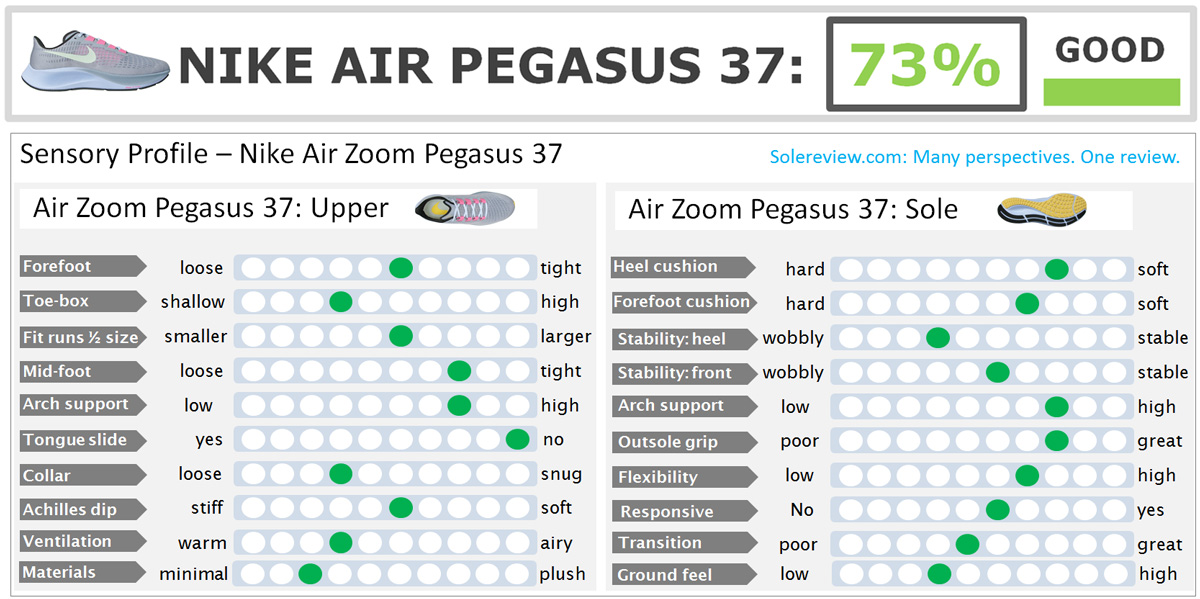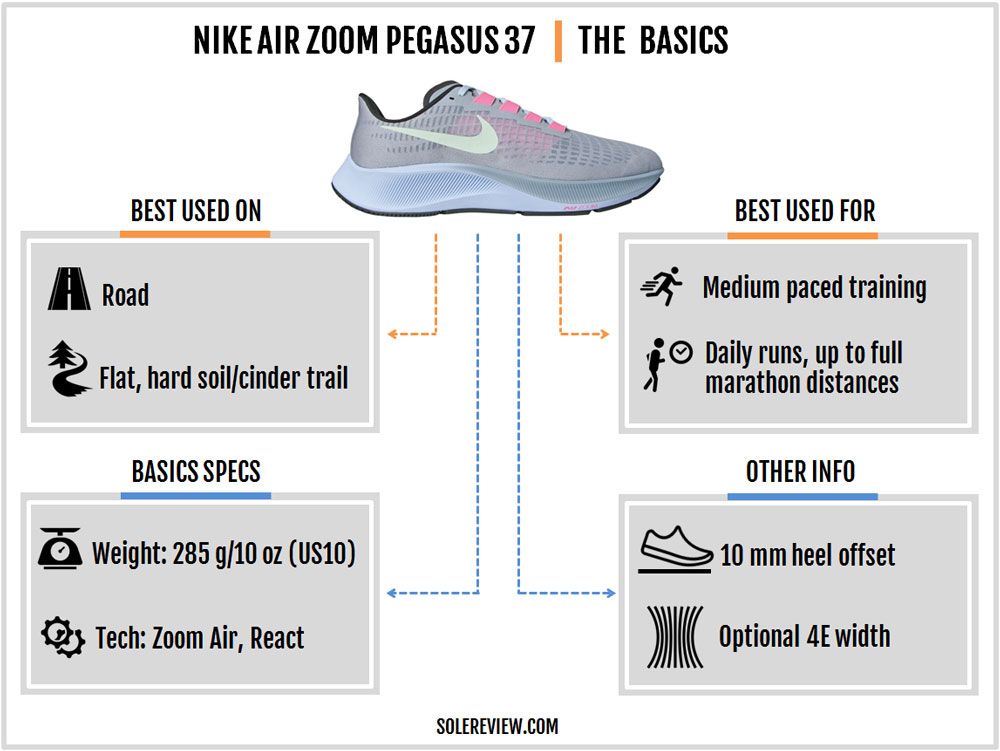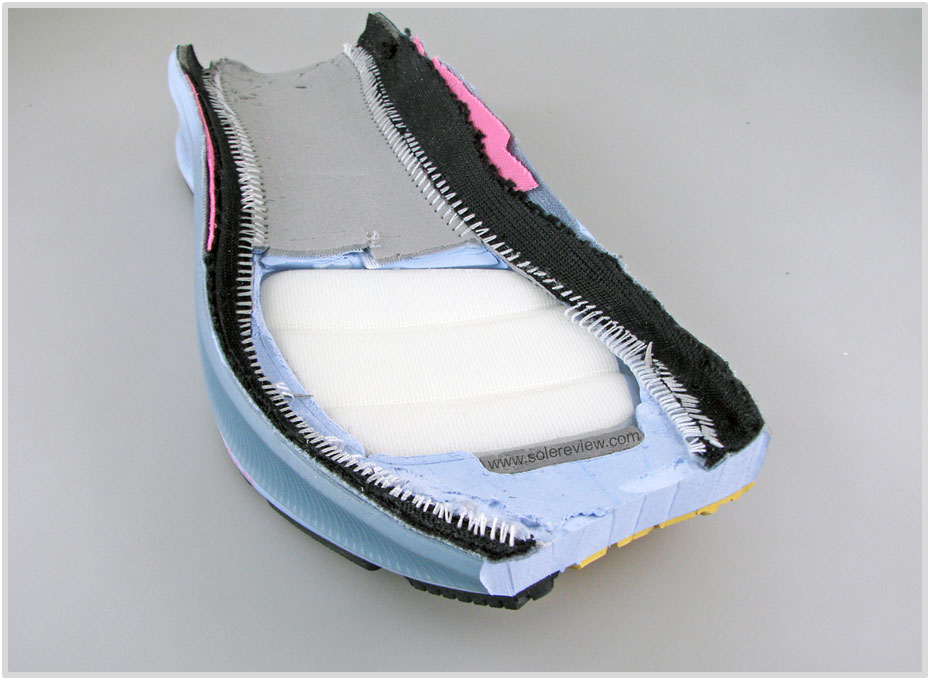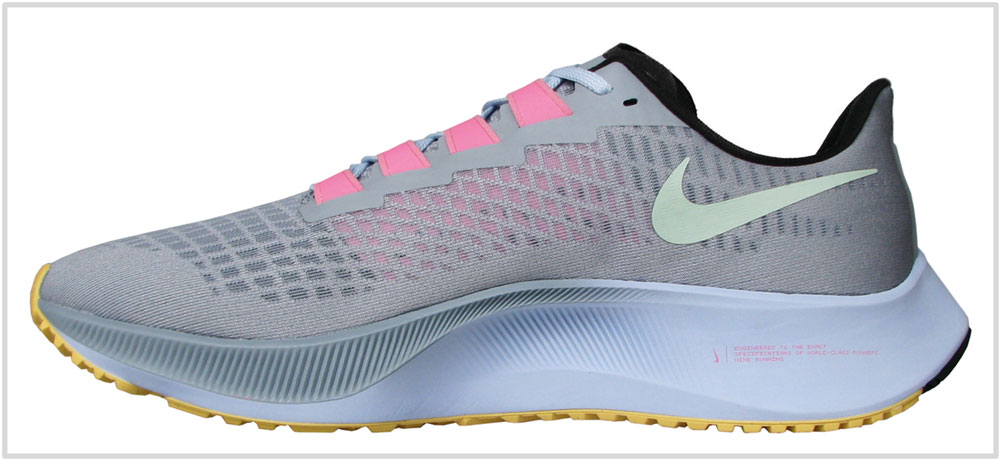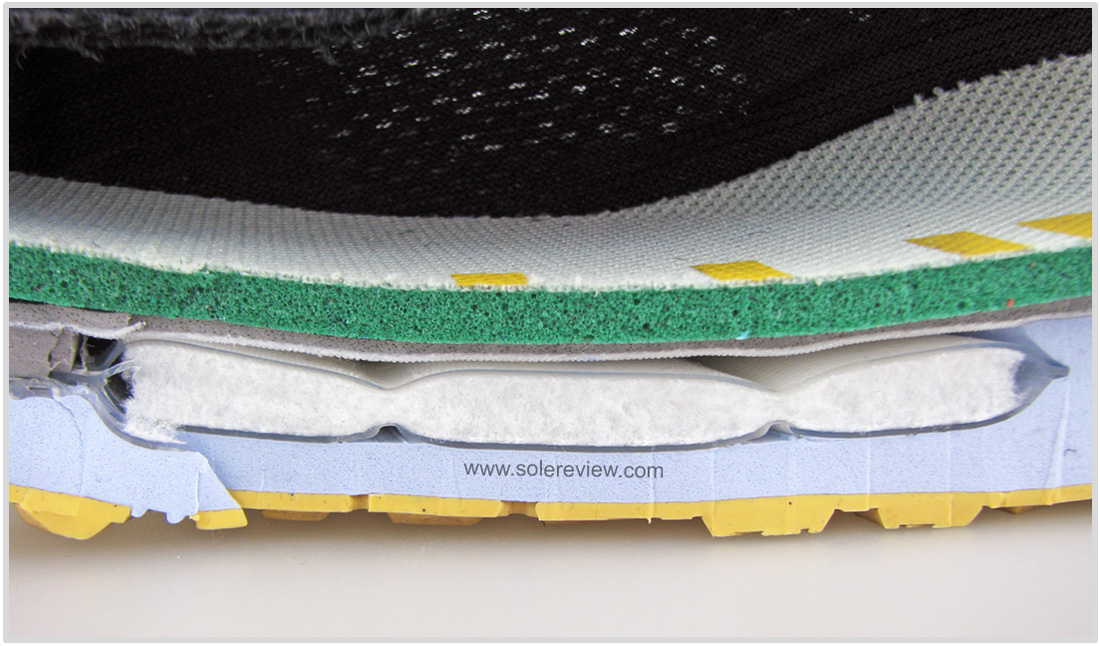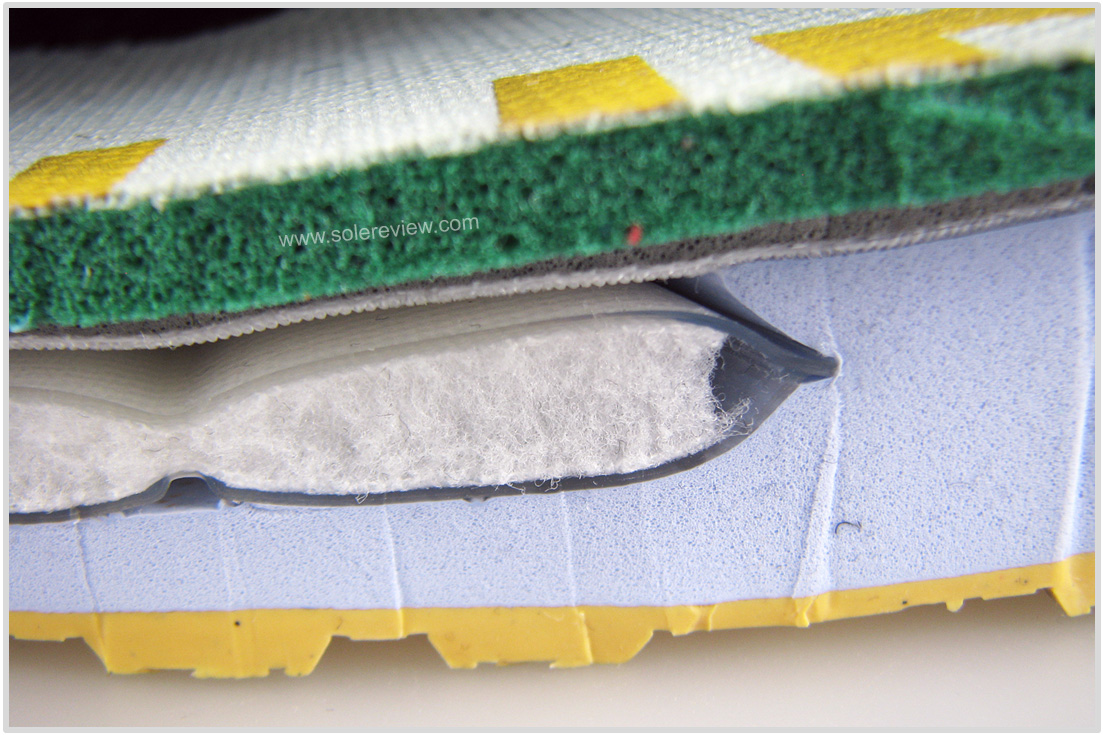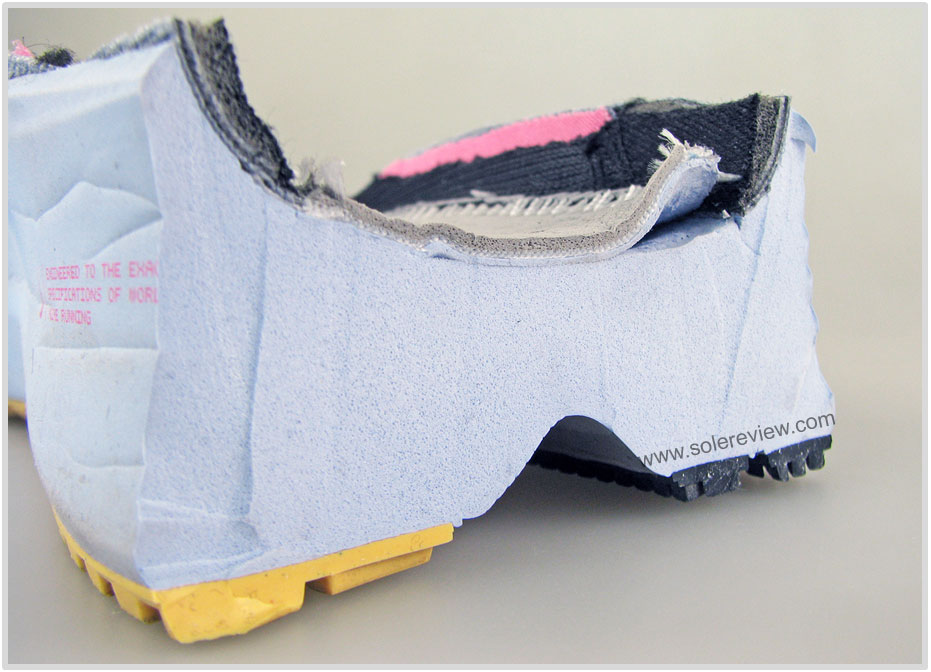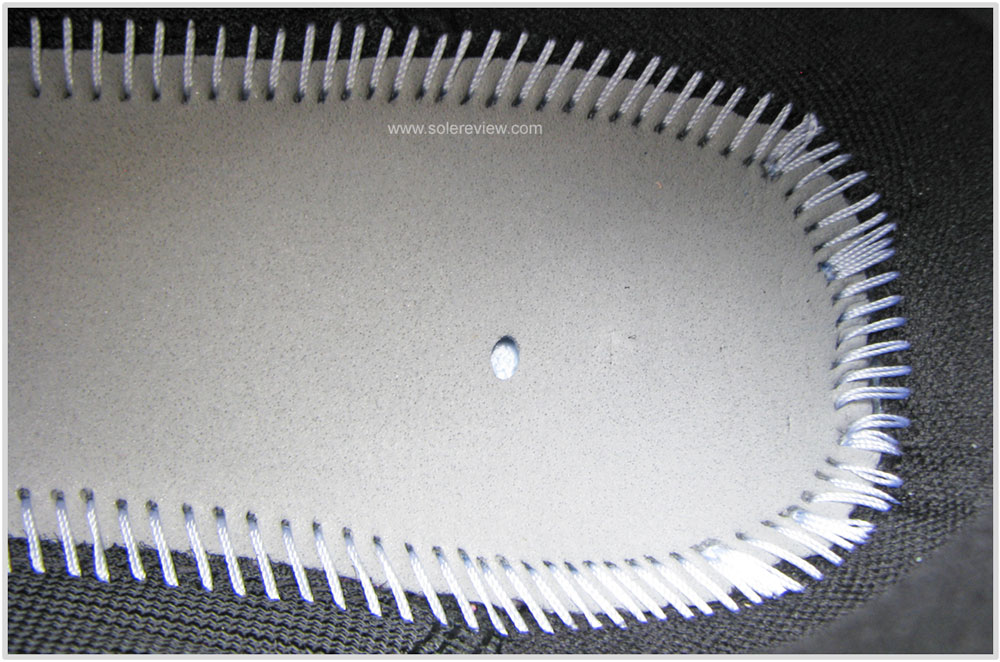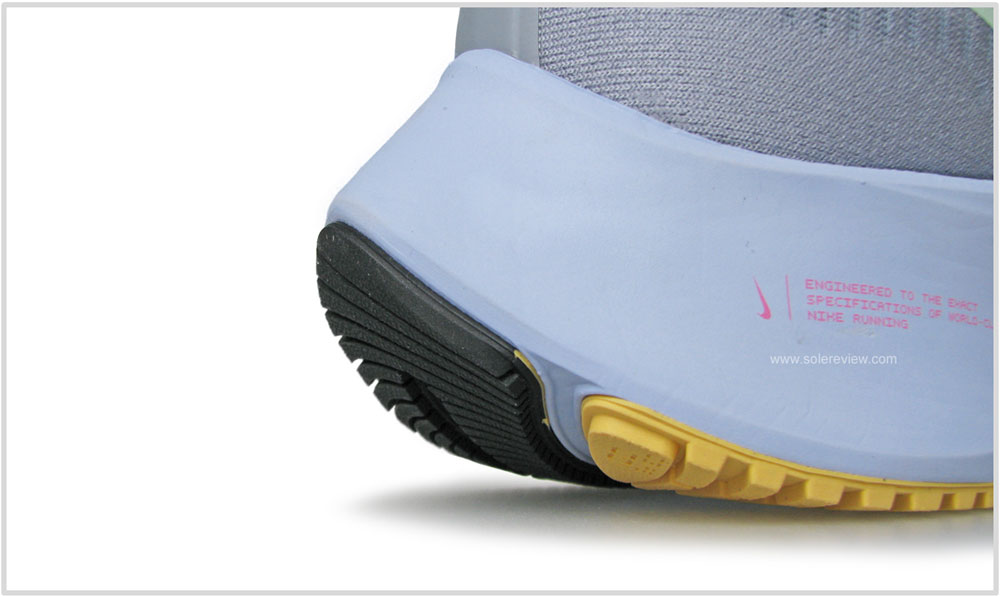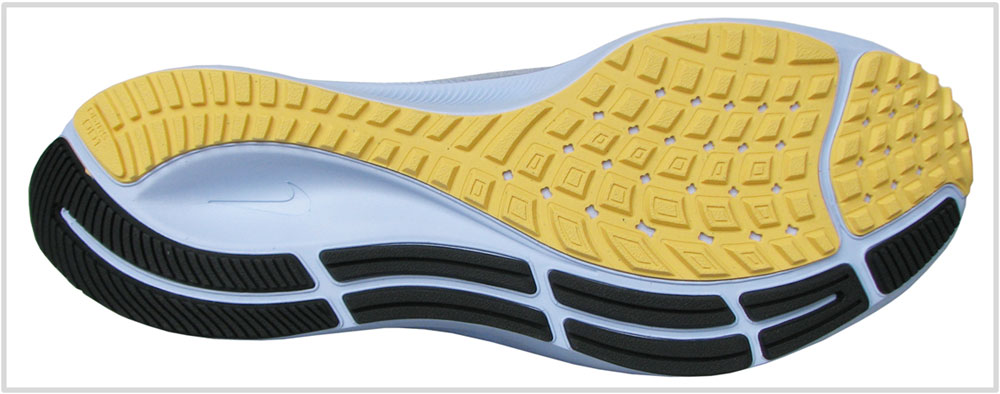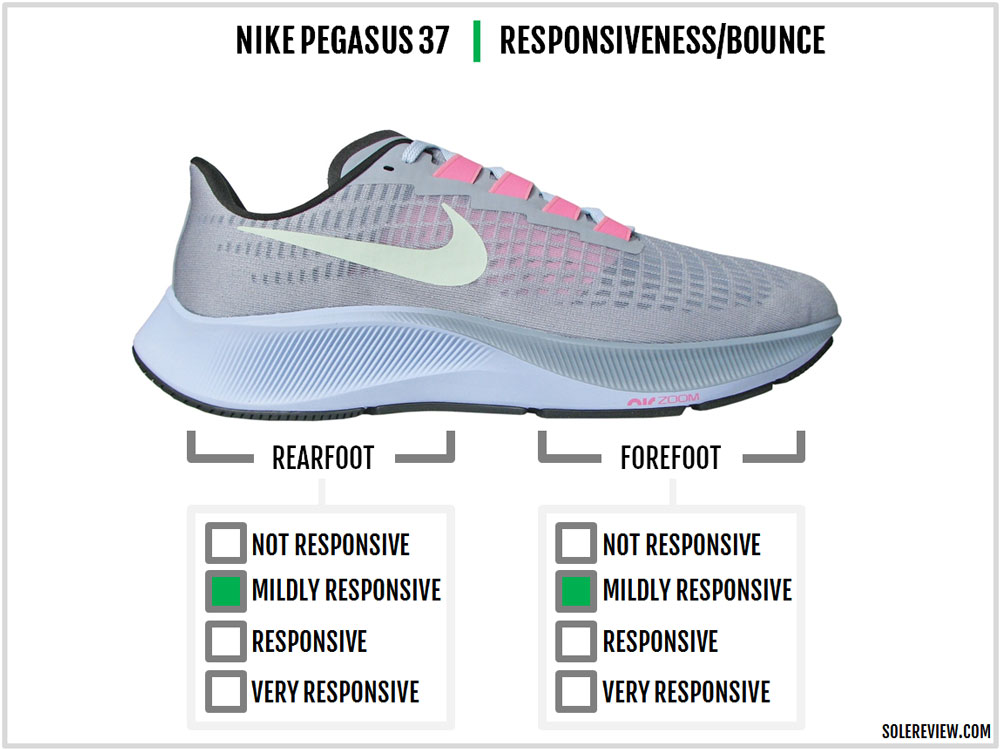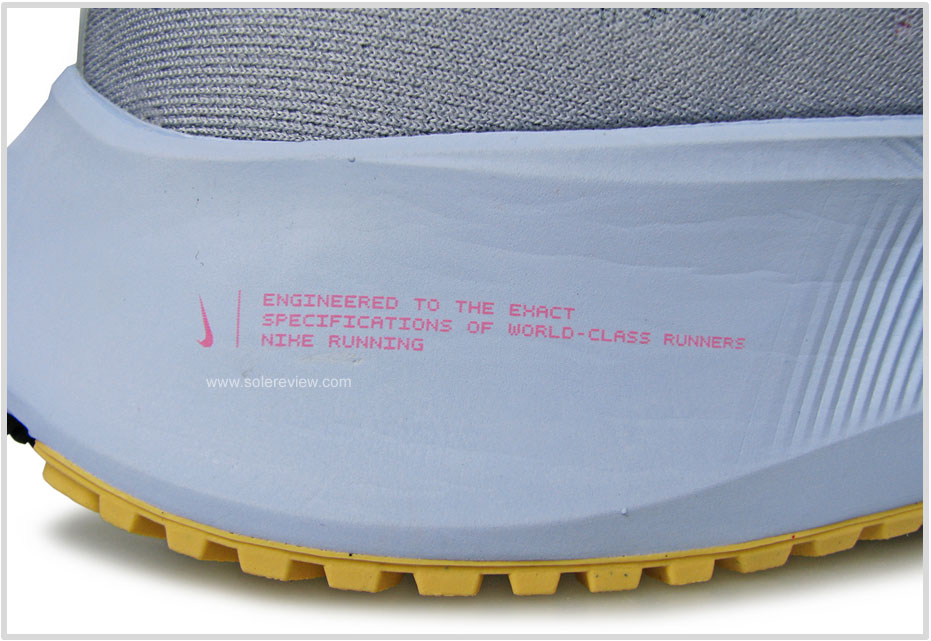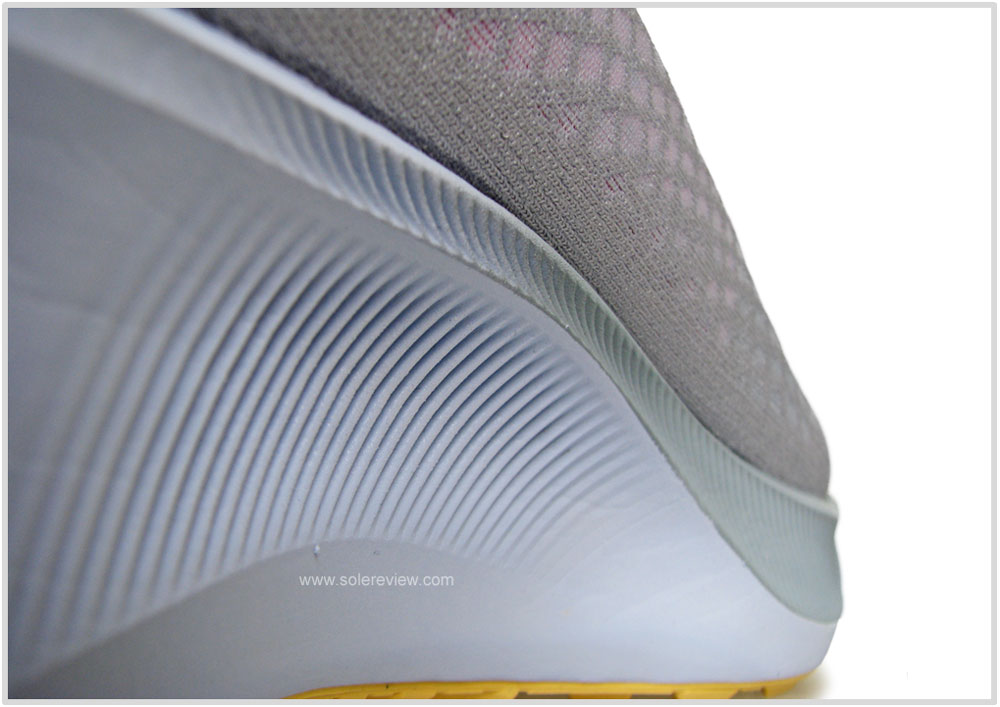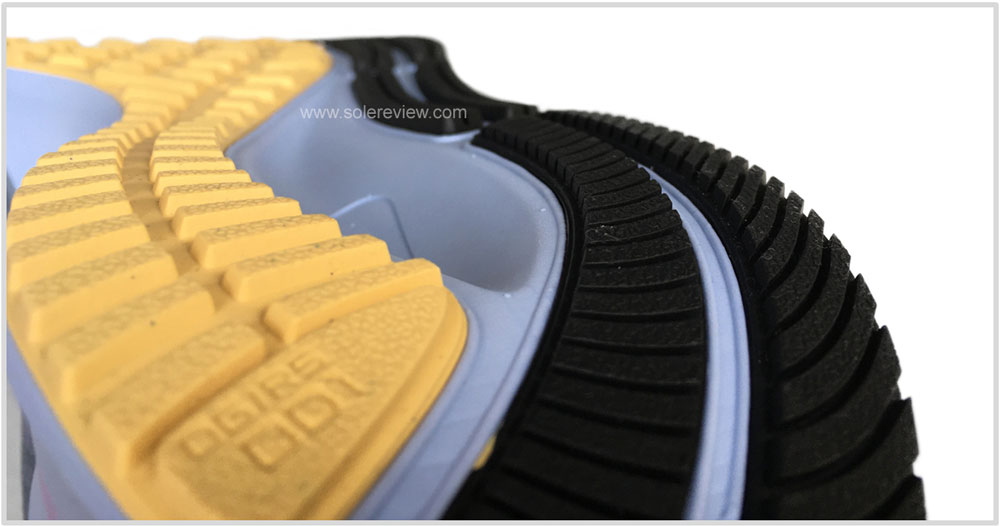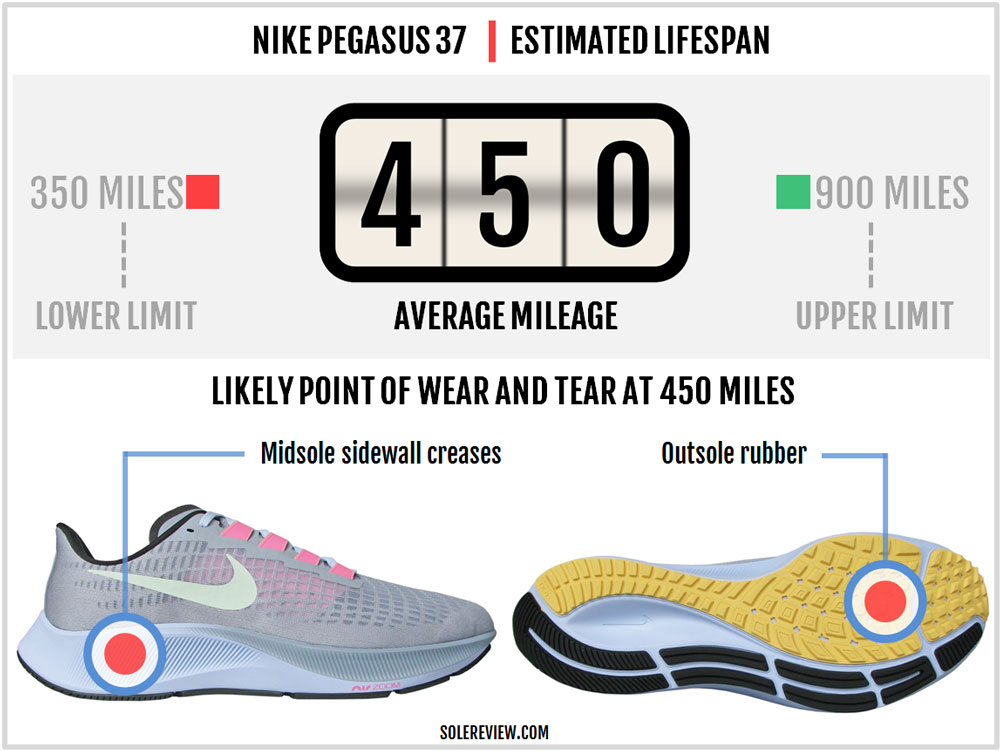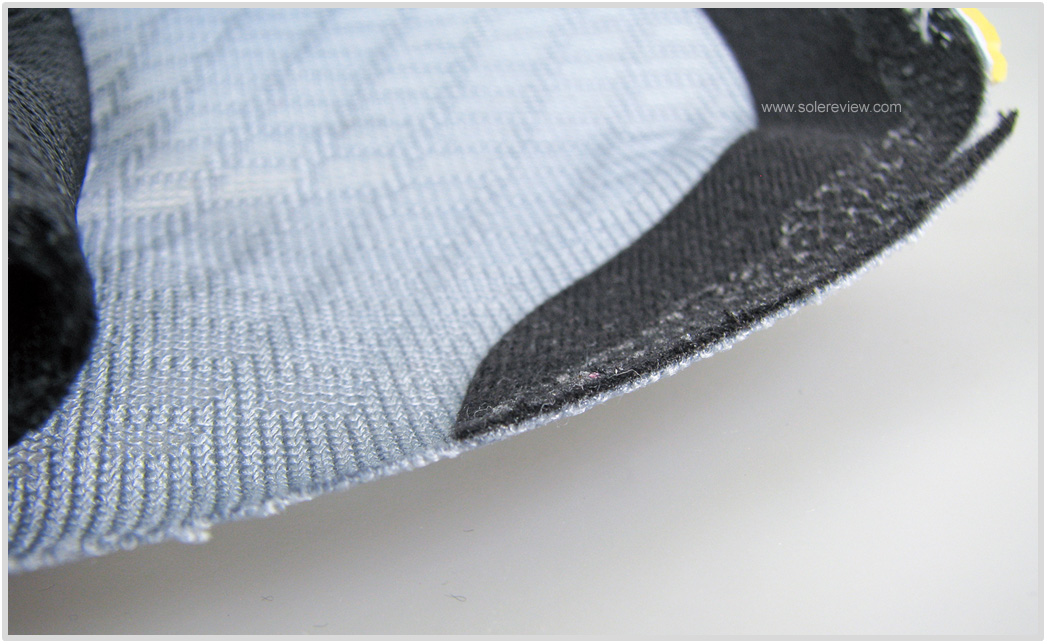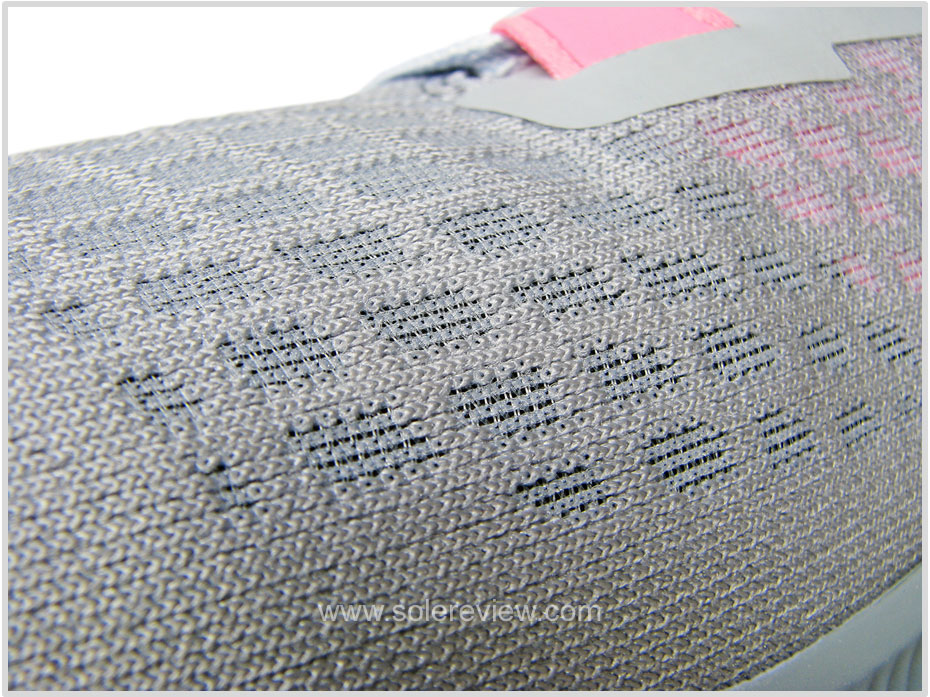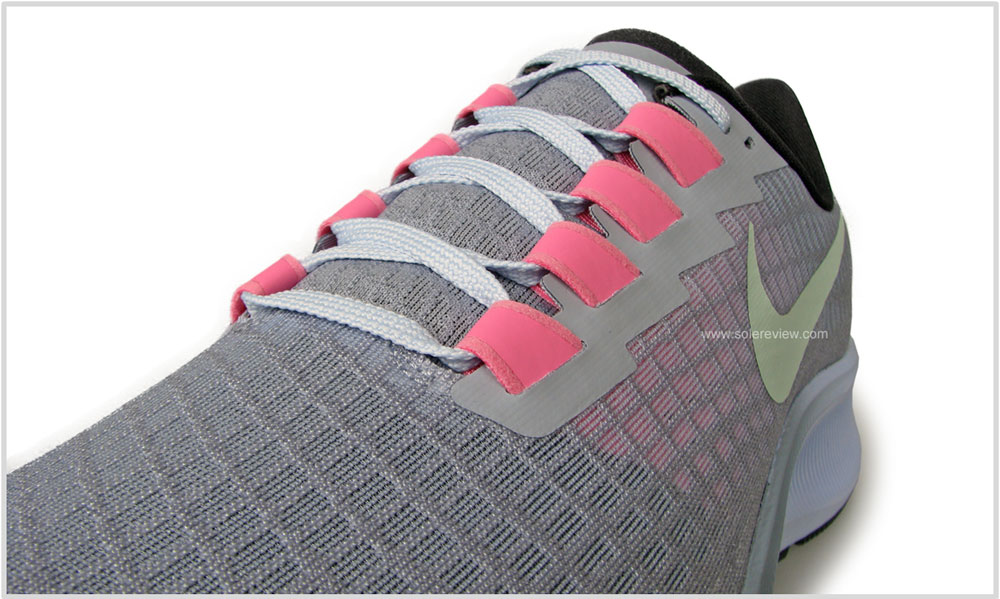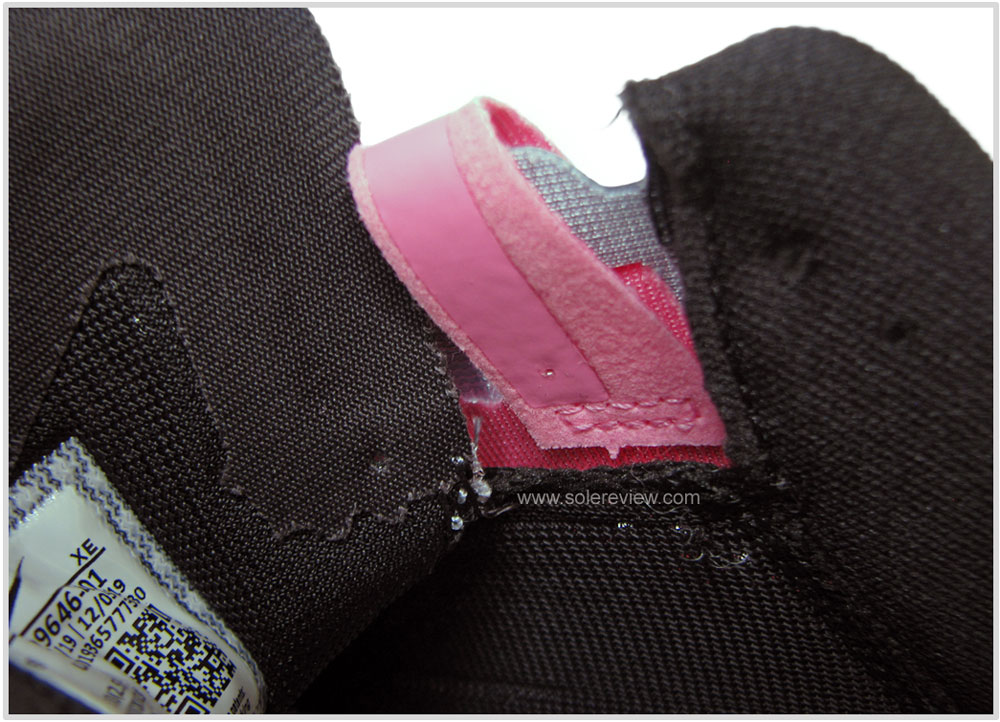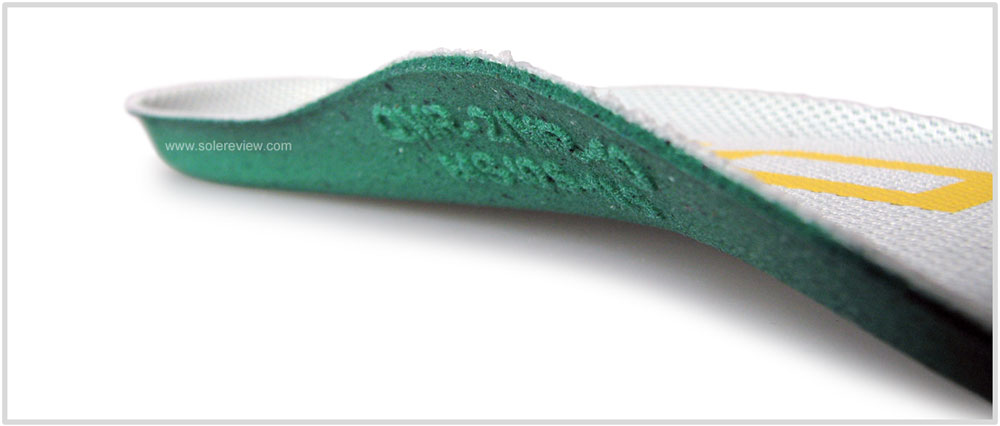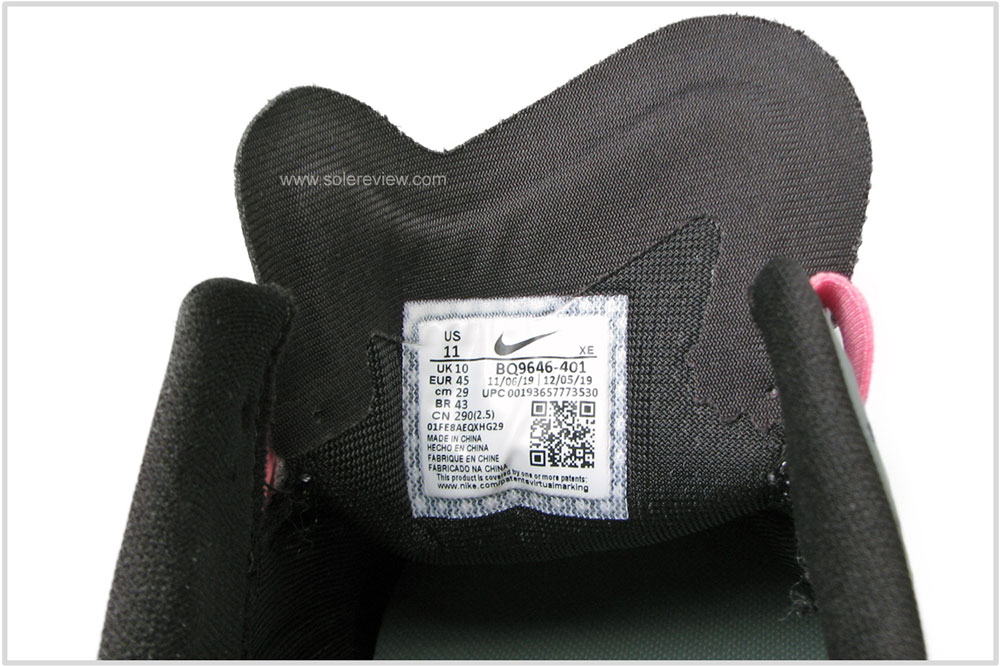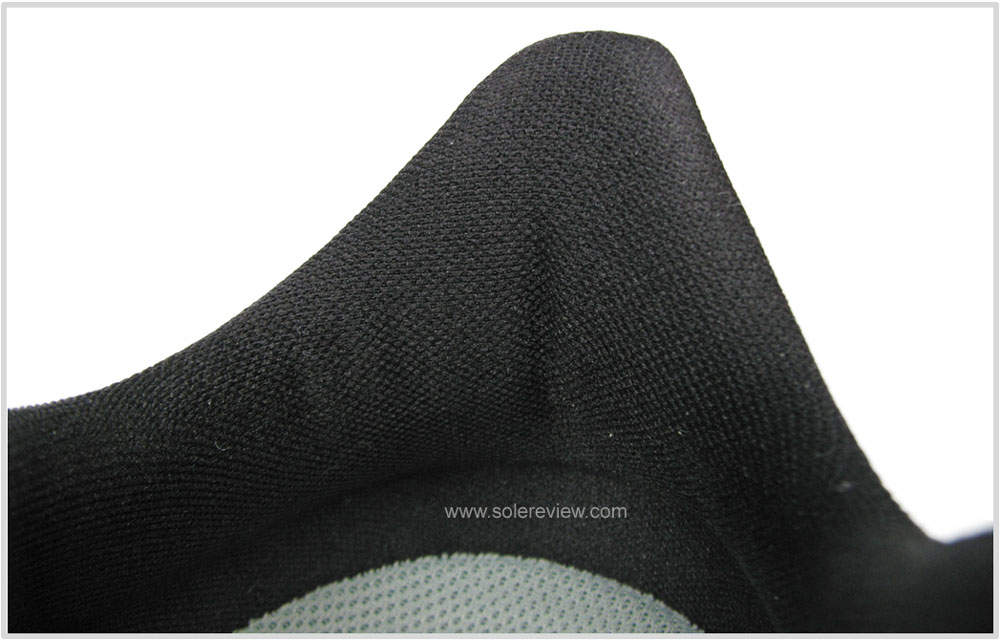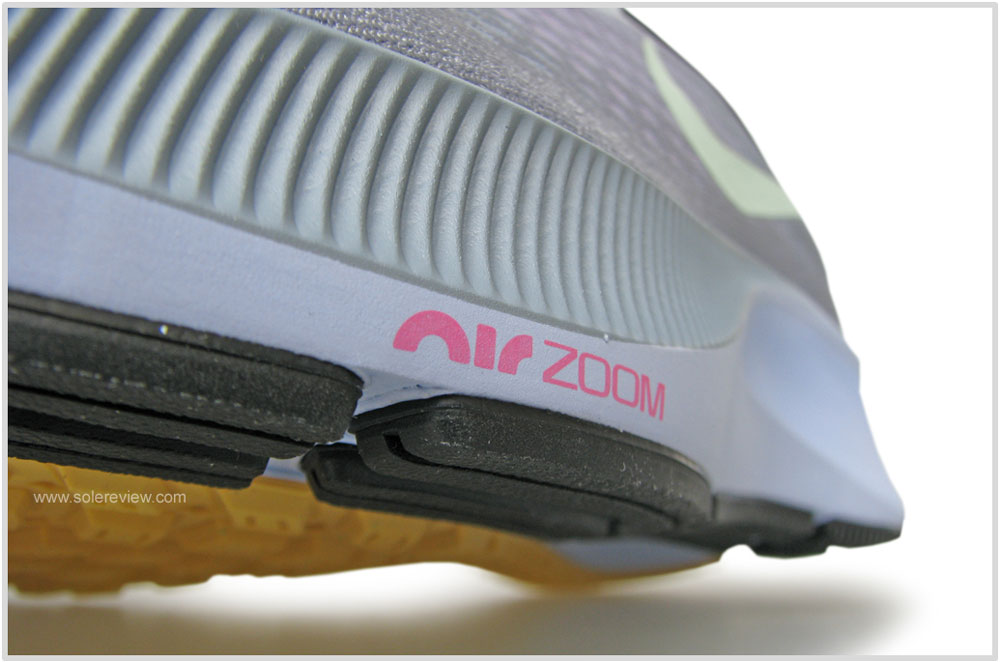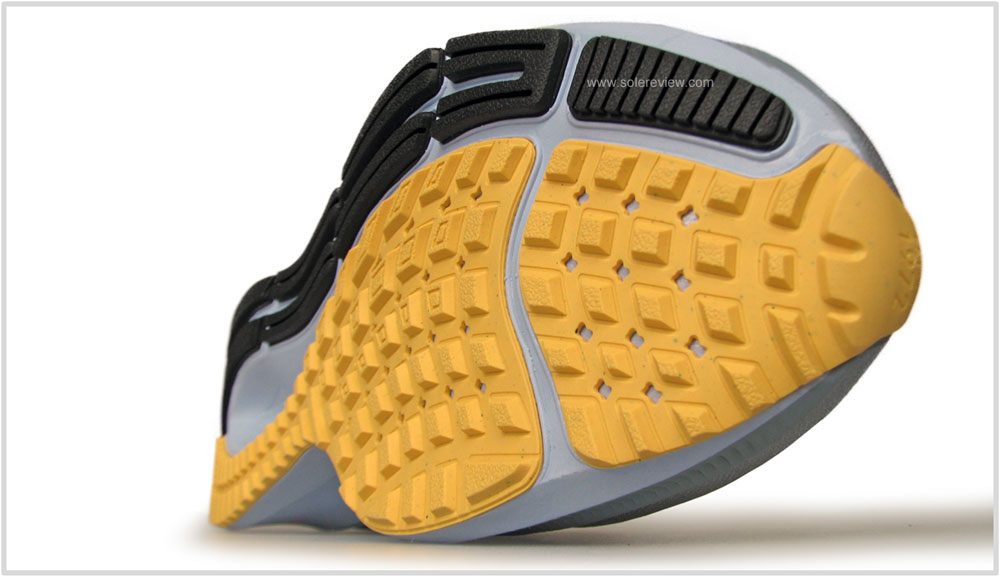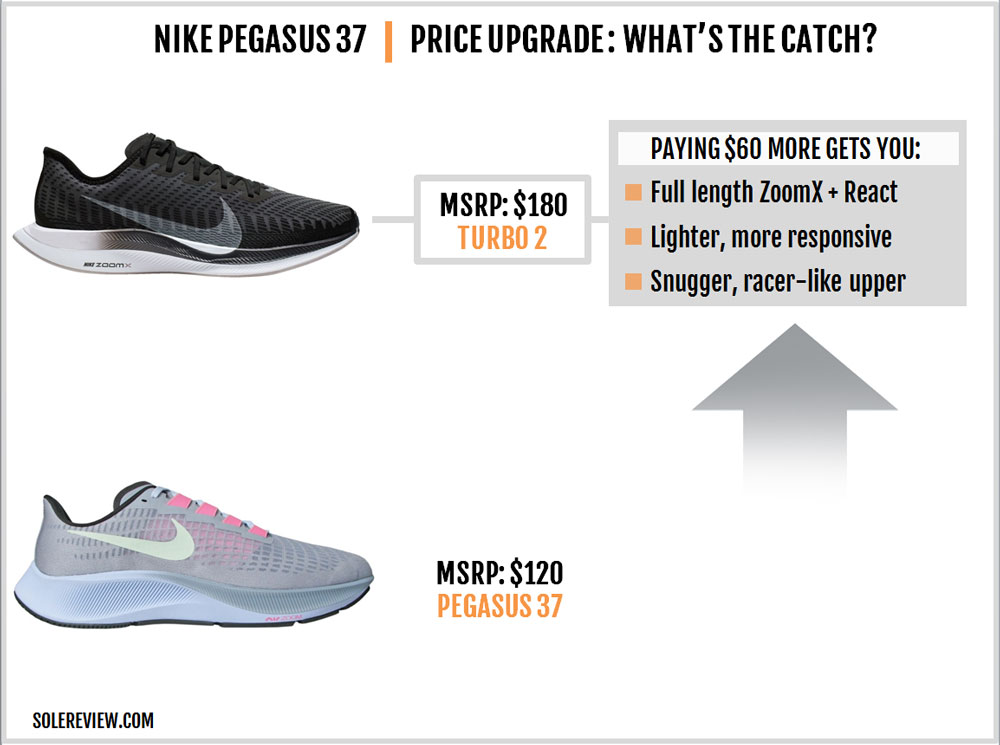INTRODUCTION
It was always a matter of when, not if.
Until last year, Nike Pegasus enjoyed a great run. It is extremely rare for any running shoe franchise to deliver consistently year after year, let alone managing that streak for several decades.
The last time Nike did something weird with the Pegasus was back in the mid-nineties; back then, the Peg even came in a Max-Air flavor. And if you haven’t noticed, 2020 is here. And this year breaks the Pegasus’s streak as a dependable and versatile neutral trainer.
With everything that’s going on in this strange year, very few people will mourn the Pegasus’s swift fall from the versatility ladder.
Is the Pegasus really that bad? Not at all. In the same context, the Vomero 14 isn’t terrible either. It is just that both these shoes are a poor match for the template they were supposed to be based on.
Most people know Socrates, the ancient Greek philosopher of infinite wisdom. But here, we’ll bring up Plato – Socrates’s student and an equally influential philosopher.
Plato’s The Republic – a Socratic dialogue – has a chapter called the ‘Theory of forms’. Here, Plato suggests that every creation is based on an ideal or a ‘form’. Without this guideline or template, a product or idea will lack most of the attributes or qualities that make it an ideal. This Youtube video simplifies this concept. While you’re at it, also have a go at Plato’s ‘Allegory of the cave’.
At this point, you’re probably scratching your head at the mention of an ancient Greek philosopher in a running shoe review. That’s it, Solereview has gone loopy after not publishing a shoe review in half a year.
And yet, this mini-digression is very relevant. There’s a good reason why Nike models such as Pegasus, Vomero, and Free were so successful during their heydays. These products promised a blend of performance characteristics and then stood by that.
In essence, these shoes were based on an ideal and did a great job of adhering to it.
But what happens when a product deviates from its template? The 2019 Nike Free 5.0 happens. A Nike Vomero 14 happens. A Saucony Kinvara 5 happens.
In this case, a Nike Pegasus 37 happens.
And if it isn’t (already) abundantly clear, we’ll say it again to prevent our inbox pummeled by angry emails. By no stretch of the imagination is the Nike Pegasus 37 is not a bad or inferior running shoe. It has a comfortable ride, a passable upper fit, and is as benign as the Asics Gel-Cumulus.
But there are several things the Pegasus 37 is not. In true Solereview fashion, we’ll get to the minutiae later in the review. For now, here are the highlights. This way, you can skip the entire rant if you’re in a hurry. Our reviews tend to run long, and that’s a lot of scrolling on your over-priced mobile device.
1. By using a forefoot-only Zoom Air bag and a React foam heel, the ride versatility goes for a toss. This design lacks the connected feel of the two-bag or full-Zoom Air set-up – something that the previous Pegasus models had perfected to an art form.
The softer heel also means that there’s a short acclimatization period involved; more on this in our ride section.
2. The upper fit is strange. The forefoot has a decent amount of room, and there’s even a 4E (extra wide) available. However, there’s a strange shallowness and tightness along the length of the large toe. The new outer mesh doesn’t stretch at all, so the interiors aren’t very accommodating.
3. The heel fit is OK. The heel midsole travel causes the foot to compress the foam, thus creating an illusion of heel slippage. And unlike the past Pegasus models, there’s no hard cellulose board layer over the midsole. Also, the lack of a padding tongue flap creates more ‘play’ room for the foot to move around.
4. The thin tongue has nearly no padding, so the upper looks like a transplant from the Streak 7. While there’s nothing wrong with that form factor, a supposedly beginner-friendly shoe like the Pegasus is no place for it. A thin tongue increases the top-down lacing pressure and reduces interior comfort while being detrimental to the overall quality of the heel fit. If Nike wanted to go minimal, they should have done what the Saucony Endorphin Shift has done with its lightweight yet comfortable upper.
We get it. Every shoe has its quirks – even the seemingly perfect ones. But the lack of ride consistency, and hence – the lack of versatility – is the Pegasus 37’s Achilles heel. The following examples make our point clearer.
The React Miler is a better Pegasus than the Pegasus 37.
The Saucony Ride 13 is a better Pegasus than the Pegasus 37.
And as sad as it sounds, even the otherwise staid Brooks Ghost 13 is a better Pegasus than the Pegasus 37.
Confused? Don’t be. All the above examples deliver a ride character that is more versatile than the Pegasus 37. There’s a good reason why the Nike still sells the Pegasus 34 online and in factory stores.
The Pegasus as you knew it is now history.
Going by the internet reviews, Solereview’s opinion on the P-37 differs from the consensus. Nike’s Pegasus page is full of positive reviews, and that feedback is also reinforced by several running shoe reviewers.
But we beg to differ; that’s because every shoe should be looked at in context. Without it, a review doesn’t amount to much.
THE NIKE PEGASUS 36 vs. 37
This is one of those version-to-version comparisons that feel utterly pointless. So much has changed between the Pegasus 36 and 37 that it’s better to treat the 37 as a completely different product. It’s like how the Vomero went from the 13 to 14. Yeah, we know.
But. A comparison we must do for the sake of this review, so here we are.
The ride has changed completely. That’s no surprise given Nike’s switch from full-length Zoom Air to a Zoom + React foam for the new Pegasus.
This time around, the heel is noticeably softer and the forefoot is softer and (more) responsive due to the thicker and larger Zoom bag. If you’ve seen Solereview’s dissection of the previous-gen model, you’d know that the full-length version was only half as thick as the regular Zoom Air.
Some runners will appreciate the softer heel. But the way we see it, the ride versatility gets affected negatively.
The firmer and more consistent ride of the 35 and 36 delivered a greater performance range. It was easy to pick up speed on the 35 and 36. In contrast, the softer heel of redesigned Peg impedes faster runs.
THE SOLE DESIGN AND RIDE EXPERIENCE
Only a Solereview-style dissection can truly help understand what’s going inside the Pegasus 37, and how (and why) it differs from the 35 and 36.
When you combine these pictures with our review and your personal experience, everything’s going to make a lot more sense from a performance point of view.

The innards of the 2020 Nike Pegasus 37. Notice only the forefoot has Zoom Air; the heel is React-foam only.
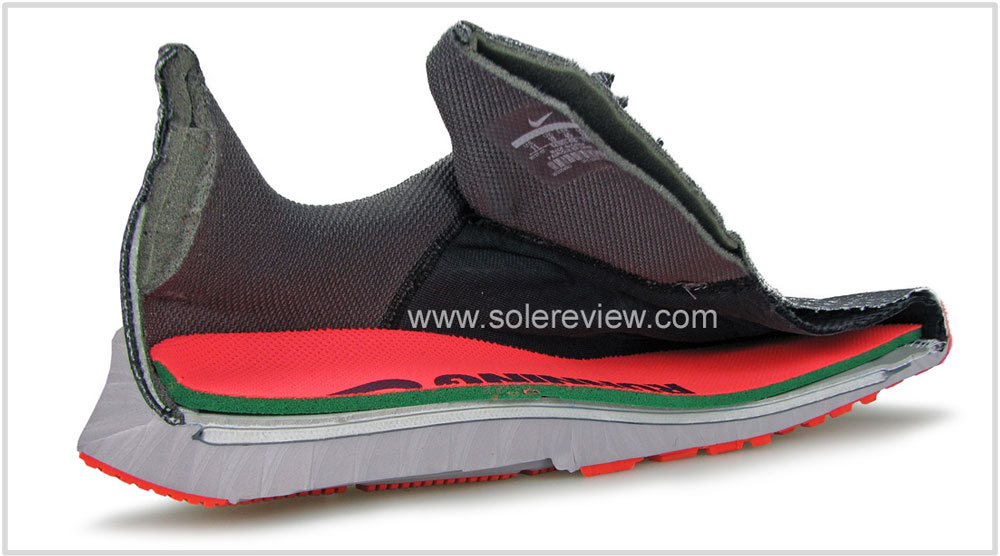
The 2018 Pegasus 35 and 2019 Pegasus 36 had the same midsole with a full-length, albeit thinner, Zoom Air unit.
As evident from the pictures here, the 35 and 36’s full-length Zoom Air covers the near-entirety of the midsole length. In contrast, the 37’s midsole has a split personality – the result of having an all-foam heel and a forefoot Zoom Air set-up.
Also worth pointing out are the changes in the Zoom Air bag design. When Nike advertised the Pegasus 37 as a shoe with a Zoom Air bag ’twice as thick’, we assumed the unit was the same as the 34 and 33.
Apparently, that is not the case. Yes, the forefoot unit has a similar thickness as the older Zoom, perhaps even thicker. But this one – as you can see – has built-in grooves for better flexibility. You can see it both in the cross-section and the overhead view.
As a single unit, the Pegasus 37’s Zoom Air bag is the largest we’ve seen thus. The coverage is generous; it covers more than 80% of the available forefoot space. So most of the cushioning material underneath the ball of your foot is derived from Zoom Air – there’s no lip service here.
The React foam is also a new addition to the Pegasus. And it’s not just the material, but the density is also much softer. This is easily the softest Pegasus ever, and that includes the Pegasus 30.
And it’s not just React making the heel soft. Nobody on the internet has pointed out the missing cellulose board that used to be a regular fixture over the Zoom Air unit.
The last time we saw the board was on the P-34. The 35 and 36 didn’t need it because of the firm midsole foam and the stiff full-length Zoom Air.
Well, the Pegasus 37 has neither. As you can see in the dissected heel, the midsole stack below the insole is 100% foam down to the outsole. Speaking of which, the rubber outsole design is both practical and traction-friendly under both dry and damp conditions.
The heel crash pad is grooved for smoother rearfoot landings while there’s plenty of coverage that adds grip. There’s a shallow section under the heel that branches forward into a transition groove. This assists with stability and transitions.
Articulated sections on the lateral (outer) outsole – that were first seen on the Pegasus 31 – helps the transitions as well. The ‘crash rails’ are standard fare, and not dissimilar than the older Pegasus versions.
You know where this is all headed. There’s a marked difference between the front and rear midsole softness. This is a significant departure from the legacy Pegasus set-up that relied on consistency.
Sure – on the previous Pegasus models, the rear was always softer than the front. That was a given due to the higher stack height and the under-heel scoop. However, there was always an undertone of firmness under the foot, one that made the transitions quicker and helped versatility.
For example, both the Pegasus 35 and 36 were versatile Swiss-Army Knife type running shoes that felt at home whether one was trudging slowly at 10 min/mile, 6 min/km paces, or going slightly faster at 7 min/mile, 4:30 min/km paces. Though the older Pegs were most certainly not racing shoes, they were always game for a fast training run.
One could even stretch the older-gen Pegasus’s use-case as an interval trainer; that’s how much performance range they had.
That’s no longer the case here. The Pegasus 37’s increased softness – both under the heel and forefoot – is very noticeable at crawl speeds and uphill runs. There’s more ‘sink’ than any of the previous Pegasus models.
And it is under these circumstances that the front-rear disconnect is felt the most. This also applies if the gait cycle includes pronounced heel striking. It gets better once some speed kicks in, but it’s nowhere as efficient as the firmer Pegasus models of the years gone by.
There’s a lot of work required to go fast. The heel-to-toe stiffness of the Zoom Air bag is missing, so trudging through the midsole softness is a somewhat laborious exercise.
The newly-designed Zoom Air behaves very differently than say, the ones used on the 33 and 34. A larger surface area and ridges compress a lot more than the tightly-sprung – and smaller – unit. So the forefoot transition isn’t as snappy as the previous forefoot Zoom Air construction. This sounds illogical, but that’s how it is.
That said, this isn’t so much of an issue for: A) Forefoot strikers who make the most of the Zoom cushioning, or B) Female runners who buy the women’s version of the Pegasus. With a lower pressure Zoom Air bag on the women’s model, the heel and forefoot densities are closer in softness. The ride is still soft, but more consistent than the Men’s version. The issue of versatility – or the lack thereof – remains unsolved.
Midsole softness is a newly-acquired theme in Nike’s product line, so the Pegasus isn’t the only shoe toning down its midsole hardness. Even the Wildhorse 6 – an established trail running shoe – gets a substantially softer chassis than the 5.
As we said, the Nike Pegasus 37 isn’t a bad shoe for daily runs at easy paces. Without context, most runners will find the ride to be pleasing and comfortable for the long haul. It’s no longer the do-it-all running shoe, that’s all.
The large and grooved forefoot bag isn’t lumpy at all and integrates seamlessly into the midsole. The springy responsiveness feels similar to the 33/34 but in a softer way. That said, the front and rear are missing that consistency.
It gets better at higher speeds, but there’s a distinct sense of loss of versatility. Also, it feels a mite bottom-loaded due to the light upper – or rather, the sense of upper lightness that comes from a Streak 7 type tongue construction.
The way we see it, the Pegasus 37 is best deployed on easy runs, at paces in the 10 min/mile or 6 min/km ballpark. There’s a lot of cushioning, so longer distances aren’t a concern. Use the Pegasus for a full 26.2 race or marathon training – no problem at all.
The comfy ride also makes the Peg a great daily trainer – with the pace limitations, that is.
Unlike the Pegasus 35 and 36, the 37 isn’t a great fit for treadmill runs or track-training. Its soft ride struggles on speed-friendly surfaces like the treadmill or track. Training on a synthetic track also involves turns, and that’s where the soft rearfoot and sub-optimal upper fit are found wanting. The said softness also makes quick starts a chore.
The Pegasus 37 works best on straight, paved roads with a pace ceiling of 7 min/mile or 5 min/km. Keeping the runs below this threshold will make the ownership experience better.
And if you’re wondering how the Zoom Elite 9 and the Structure 22 managed their forefoot-only Zoom unit efficiently, the answer is very simple. The midsole density was stiff, and a cardboard/cellulose layer over the heel helped with the consistency. The Zoom bag was smaller and stiffer too.
Stability is ok. Here, the Pegasus does a fair job of keeping the ride neutral. The sidewalls have a concave/recessed molding, and that adds some structural rigidity to what is a soft midsole. The under-heel cavity also helps lower the center of gravity. This is why the Peg feels firmer than the Infinity React even though both have similar stack heights.
That being said, the 37 isn’t as supportive as the 35 and 36. However, there’s one area where the 37 does well, and that would be the sense of under-arch support. The Vaporfly-style midsole has a high sidewall flare, and that acts as an arch cup of sorts.
And just like any running shoe with a cushioned heel, there will be a variance between the static and published heel offset. On paper, the Pegasus 37 has a 10 mm heel to toe offset.
However, the loaded drop could be lower depending on the foot-strike. The firmer Pegasus models – namely the 35 and 36 – had a truer offset due to the stiffer midsole.
This also means that the Pegasus 37 takes some time to get used to. There is a slight chance that runners who transition from the firmer Pegasus 35 may experience initial calf/Achilles soreness due to the softer heel and cushioning travel.
In the early days of ownership, we also thought that the softer rear was one of the reasons behind the sub-par upper heel fit. While that view still holds, we realized that the heel fit is also the product of the shallow collar and the flat, racer-like tongue.
This section would have made more sense if the Zoom X-based Vomero 15 was already on the shelves. We imagine that would leave a healthy degree of separation between the Pegasus and Vomero – as it was in the distant past.
For now – your budget allowing – a shoe like the Vaporfly Next % gets you an exceptionally springy and fast ride for long-distance runs. Even the React Infinity Run will do. For shorter races and training, the Zoom Streak 7 is a dependable option.
One of our favorite non-Nike shoes in the max-cushioning category is the New Balance 1080 V10, and an option that should be considered. For road races, something like the Saucony Type A9 is a tried-and-tested pick.
IS THE NIKE PEGASUS 37 DURABLE?
Oh yes. The Pegasus is holding very well after 100 miles, and its durability isn’t in question. The wear and tear on the outsole have been minimal save for the expected scuffing.
The midsole cushioning is holding up well. Though the thick midsole develops creases on its sidewalls, it’s cosmetic – not something that affects the ride performance.
From the outside, the upper mesh looks thin. However, the Pegasus’s upper has a full inner bootie that adds structural strength.
It’s highly unlikely for your big toe to poke through the upper.
THE UPPER DESIGN AND FIT
The way we see it, the Pegasus’s upper design peaked 7 years ago. Of course, we’re talking about the Pegasus 30.
Not only did the Peg 30 have just the right proportions, but its materials and construction also resulted in a superior upper. With its engineered mesh and fused overlays, the 30 wouldn’t look out of place even in late 2020.
The 30’s upper fit and feel epitomized the Pegasus ideal – a daily neutral trainer that appeals to most classes of runners.
After the significant redesign that kicked off with the Pegasus 31, the 34 had the best balance between performance fit and comfort levels. It isn’t surprising that the Pegasus 34 is still sold online and through Nike factory stories. Just like shoes such as the Air Monarch, Nike continues to keep the Pegasus 34 in circulation. And why? Because people keep buying ‘em, that’s why.
The Pegasus 37 marks the end of the Peg 31-36 design template, and it’s already off to a rocky start.
Though the upper doesn’t cause discomfort in any way, it’s easy to tell that the design is a work in progress. Take the toe-box for example. From the outside, it looks very wide and accommodating. On the inside, it’s snug.
The Peg has a full sleeve that extends right up to the tip, so what you see isn’t what you get. For the most part, the forefoot fit is ok – except for the area near the big toe. Or should we say – above the big toe.
Only the area above the large toe is shallow with a noticeably snug under-tone. Though we’re not 100% sure what causes this, we can make an educated guess. It’s certainly not the internal toe-bumper. As you can see in this tear-down, the ‘bumper’ is just another layer of fabric fused between the meshes.
Then what is it? We can think of two reasons.
Firstly, the outsole tip is glued asymmetrically over the toe-box. This appears to be a deliberate aesthetic-driven choice, and it has the effect of limiting the toe-box ceiling.
The second reason is the midsole design; there’s no flare on the large toe side. So while there’s isn’t a paucity of space within the upper, the latter is glued to a slimmer midsole base. Else, the interior fits true to size.
You’d think Solereview is over-reacting. Not at all. We can point out an example of a perfectly proportioned toe-box, and that’ll be the New Balance 1080V10.
The new 1080 has the perfect toe-box fit. Be it the comfortable materials or the generous amount of foot-splay room, it’s hard to pick any flaws in the forefoot fit.
As we said, there’s nothing wrong with the Pegasus 37’s upper per se. It just feels glitchy, a footwear equivalent of a beta software release, that’s all. The upper runs warm due to the double-layering, but whether that’s good or bad depends on what kind of temperatures one is running in.
Also worth pointing out (for narrow-footed runners) is that the outer mesh doesn’t have any stretch, so lacing the first row tightly may lead to a gathering of materials.
The midfoot lock-down is great. Flywire is gone, and in its place is a strapping system with lacing loops. We’ve seen countless variations of this design with Nike – and it works better than the cord-based Flywire. To be specific, models like the Vomero 7, 8, and the Lunarglide 3 come to mind.
The wide straps cinch quickly when laced, and hugs the feet on either side without hot spots. The inner sleeve creates a thin barrier between the strapping system and the foot, so it’s not in direct contact with the foot.
Together with the flared midsole and the insole, the upper enhances the sensation of under-arch support.
Nike chose a non-quilted and somewhat short tongue for the Pegasus 37, and the results are less than perfect. Though the top-down lacing pressure isn’t uncomfortable, its Streak 7-like design feels out of place on a running shoe that is supposedly a versatile daily trainer.
Context, people. Context.
Over the past few years, the Pegasus’s tongue length has ranged between too short and too long, and this year is all about shortness. This means that utilizing the last row of lacing (runner’s loop) doesn’t result in an optimal experience.
Upon flexing the ankle, the lacing applies a slight pressure over the instep as there’s not enough tongue underneath.
The heel fit can make or break the upper’s fit. Most runners can live with a tongue slide or a narrow forefoot. On the other hand, a sub-par heel fit is likely to be noticed immediately.
On the positive side, the Pegasus 37’s heel follows the best practice on depth – it is between 80 and 85 mm, like most well-designed running shoes.
However, there’s something amiss about the volume and position of the collar padding. It just quite doesn’t lock in the way it should. We also believe that the tongue length and padding – or the lack thereof – is also at work here.
With a minimal, padding-free tongue in the front of the foot, there’s more play room for the foot to move around.
And last but not the least, we’ll repeat our observation from the ride breakout. As compared to the firmer Pegasus 35/36, the softer heel travels more when loaded.
As a result, the Achilles tends to travel along the inside of the heel. It’s not much, but even a couple of millimeters of movement makes a difference in the heel fit.
Like we said – the upper isn’t bad, but it’s not quite Pegasus-like. Improvements are needed, and we hope some of the tweaks finds its way into the Pegasus 38.
PROS AND CONS
We never said that the Pegasus 37 is a bad shoe; we merely focused on its out-of-context character. The softer ride of the redesigned midsole decreases the versatility and the ‘Pegasus-ness’ of the new model.
If this product wasn’t called the Pegasus, then we can point out many things that this shoe does well. The React midsole is cushioned and comfortable enough for long-distance runs; the Zoom Air bag adds responsiveness softness under the forefoot.
On the top, the blown foam insole adds step-in softness.
The outsole traction is excellent, and its geometry works together with the transition groove for a smooth transition. There are no complaints with the durability either. In short, there are no functional flaws with the midsole and outsole.
On the other hand, the upper is a mixed bag of good and average. First, the good. The midfoot strapping system does a great job of locking the foot in; the laces are quick to cinch. The sleeved interior is smooth and seamless.
We have no idea what Nike was thinking when it swapped the padded tongue for what’s on the 37. Also, the heel depth padding locks in the wrong place. The short and un-quilted tongue makes the top-down lacing pressure felt while diminishing the sensory perception of the heel fit.
The soft midsole also travels downward a bit when loaded. Combine this with the upper design, and the result is an average heel fit experience. There’s no slippage as such, but one comes away feeling a bit shortchanged in the fit department.
No reflectivity is provided on the standard 37; expect that to be available in the winter/Shield version.
THE NIKE PEGASUS 37 vs. VOMERO 14 vs. PEGASUS TURBO
The way things stand today, the Pegasus Turbo 2 is the only true upgrade from the Pegasus 37. It is lighter, more responsive, and manages to feel fast while being extremely comfortable.
With these updates, the Pegasus 37 ends up being similar to the Vomero 14. Both the shoes have a similar heel softness, but the Vomero ends up with a more cushioned ride due to its higher-volume and flared midsole. Under the forefoot, the Pegasus has the upper hand on the ride softness.
The Vomero’s upper fares better than the Pegasus 37, but only just. The heel fit is better, and the toe-box dimensions are more consistent than the Peg. We like the Peg 37’s midfoot fit better though. With no Flywire, the wide straps do a better – and smoother – job of keeping the fit dialed in.
We never thought we would say this, especially with our now-famous Vomero 14 review. Given the change in circumstances, the Vomero 14 is the better shoe. The upper fits better, and the presence of a full-length Air bag gives the Vomero a ride consistency that is now missing on the Peg.
While not up to expected ‘Vomero’ standards, the V-14 is a comfortable and cushioned daily trainer with a neutral ride.
There’s a $20 price difference between the two, but bargain-hunting should yield a price that is lower than the just-released Pegasus.
COMPARABLE NEUTRAL TRAINERS
Within Nike, the Vomero 14 is a shoe you should look at. And if the Pegasus nor Vomero doesn’t suit your needs, the Nike React Miler is worth trying. Very comfortable, very consistent, and even comes with reflective bits – something that the Peg lacks.
Other shoes here are the usual neutral-training suspects. Namely the Asics Cumulus 22, the Brooks Ghost 13, Saucony Ride 13, and the New Balance 880V10.
The Asics Cumulus 22 is the best version yet. Before you get too excited, just know that the Cumulus isn’t class-leading in any way. It’s just that the updated midsole and upper makes it a very comfortable and well-behaved neutral trainer.
The new Saucony Ride 13 is the firmest of the lot and easily the most versatile. The single-density midsole results in a consistent ride quality that feels at home whether the runs are fast or easy. It also feels the most agile of the lot.
Mizuno has reconfigured the foam for the Rider 24. With this update, the ride is noticeably softer – this also means that you don’t have to break-in the shoe. This is good to go right out of the box.
The newly-released Brooks Ghost 13 is a safe and dependable neutral trainer. It’s not particularly great at doing anything specific, but it’s very reliable.
The New Balance 880V10 has a similar use-case, except that its reformulated Fresh Foam midsole gives it an entirely different ride experience than the past 880s.
Do you own this shoe? Improve this review by sharing your insights – submit a review here.

